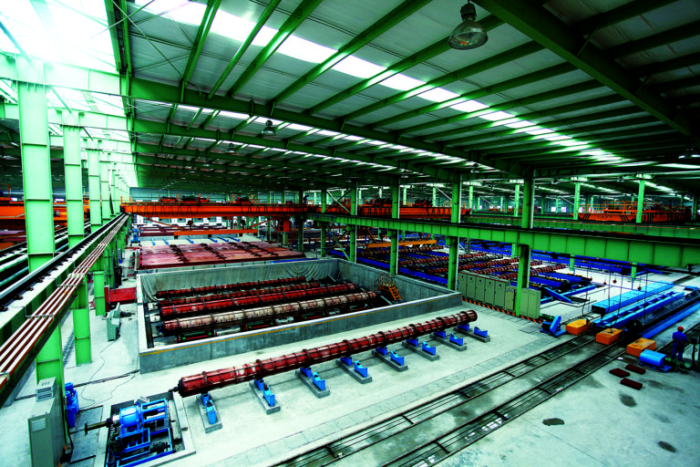The ongoing coronavirus pandemic is having a severe impact on all industries and the global economy on an unprecedented scale. More than 180 countries and territories have reported cases of COVID-19. Some countries have tens of thousands of active cases but the exact number of infected is unknown. Each affected government has launched major public-health and economic emergency plans to tackle the industrial recession, most of which involve isolation and shut-down of large swathes of industry deemed “non-essential”.
Since, most industrial work is halted as a result of this pandemic, undertaking regular and scheduled maintenance has become a challenge, with the potential for a long unscheduled outage. For a plant to run safely and successfully after a long shut-down, effective maintenance procedures and commissioning need to be adopted.
While this period is an increased threat to plant and equipment, this period could also be used to create a detailed plan and to capture maintenance, inhouse inspections/PPMs and Statutory Inspections under LOLER and PSSR, but it could also lead to an increase in breakdowns and accidents if consideration is not given to how machinery is switched back on and run-up again. This article written by Finch consultants Richard Hoyle and Tristan Pulford, will discuss the engineering and maintenance implications of a prolonged, unscheduled shut-down due to Covid-19.
Prolonged Shutdowns
Each industry has various types of plant and machinery, whether it’s pressure vessels, pipework, conveyors, cranes, moving parts, or static components. Almost all plant requires some type of maintenance or inspection to ensure smooth, efficient and safe operation. Some of these are legally mandated to occur by specific dates. Finch have previously discussed the challenges around this and what is required under the Statutory Regulations and guidance given by HSE during the Covid-19 outbreak. That article covered elements of LOLER and PSSR examinations, amongst other Regulations (Legionella and COSHH).
Just like your car at home, if machinery is stationary and not operating for a period of time it can cause malfunctions and increased risk to safety. During this period the draw down on or lack of proactive-maintenance (PPMs) can lead to a range of issues when the plant needs to run again post isolation. Many problems are likely to occur in the plant due to long stoppages with no maintenance occurring. These may include:
- Bearing/Coupling/Brakes seizing.
- Stuck Valves.
- Electrical and Mechanical Issues.
- Increased Vibration.
- Chemical reactions with seals, gaskets etc.
- Deposit build up from processes and interference with flow rate.
- Debris, dust and oil that may normally have been cleaned off surfaces that could now mask cracks/defects in welds, material etc.
- Compromised calibration of instrumentation.
- Trapped water (water hammer).
Lack of Maintenance
Safety regulations such as the Provision and Use of Workplace Equipment Regulations (PUWER) require companies to maintain all the equipment in an efficient state by applying robust maintenance. All the maintenance records should be regularly updated, with results of each maintenance operation and close-out actions.
The type of maintenance and the schedule will vary depending on the type of equipment, the manufacturer and the model. This also includes procedures for mothballing equipment/run-down maintenance and storage preparation. Plant maintenance is a highly important task during normal operations but particularly during this forced shutdown period due to COVID-19, this is because lack of maintenance can lead to:
- Increased exposure to hazards, as machines are more likely to fail and when they do it is often in a dangerous and catastrophic manner, (HSE Maintenance Guidance)
- Safety systems are more likely to fail when not maintained and inspected properly.
- Equipment breakdown, which can cause severe production losses, especially if parts cannot be sourced, delivered, bespoke so not carried as spares and have to be manufactured (lead times) etc.
- Increased costs of repair or replacement as parts may seize.
- Accidental discharge of fluids/substances into the environment.
Before Starting your Plant
Some necessary plant maintenance tasks need to be done before starting all the machines and critical plant equipment, which may be akin to “recommissioning” in places to ensure key safety items are operating correctly. By completing these extra steps, the chance that the plant will run reliably for an extended period of time when compared increases to an immediate cold start up.
A pragmatic approach has to be taken, but the key items to prioritise are the functional safety aspects, and any equipment that involves moving parts which may have seized. Some recommended checks that may assist in a smooth start-up are:
- Thorough examination of critical equipment like generators, boilers, rotary fans, milling equipment, turbines and conveyors belts to analyse weak spots and harmful deterioration.
- Inspection of valves, and bearings to ensure they have not seized and are lubricated where required.
- Checking pipes for evidence of corrosion activity, leakage and damage.
- Monitoring critical instrumentation during start-up process.
Statutory Inspections
Under normal circumstances business and industry should be compliant with the relevant Regulations and as dutyholders understand their responsibilities under the applicable legislation. PUWER is the regulation under which the dutyholder must ensure that the working environment is safe to be in and the incumbent duty to have machinery safe to use and employees secure. Industry that operates lifting equipment will be conversant with LOLER and pressure equipment that fulfils direction under PSSR must be inspected under those Regulations. HSE has now given clear guidance that under COVID-19 conditions Statutory Inspections must still be conducted (completed by a third part inspection provider/competent person) and there is no quarter given in not having the inspections carried out, unless part of a risk based approach and agreed postponement where this is allowed. Their guidance now extends to ensuring that the competent person should be given a safe method of accessing the equipment which includes social distancing and facilities to wash hands etc. The basic provision of a safe environment is no different to pre-COVID-19 expectations, although the manner in which the term ‘safe’ is used has additional connotations.
So how does this affect the maintenance cycle and preparedness for inspection? Efficiency is the key factor and a good maintenance schedule that includes the Statutory Inspection periodicity for each item of plant can compliment each other. Two examples of efficient planning are:
- Considering PSSR. A vertical air receiver that is part of a pressure system supplying air to packaging machinery will require a Thorough Inspection every 24-26 months. 24 months gives better calendar planning. The Thorough Inspection requires examination of both the external and internal joints, surfaces (thickness checks) and also includes a calibration verification check on both the pressure gauge and safety device (safety valve). Depending on the condition, environment and usage there might be a requirement for NDT on welds etc. The key to how the inspection is undertaken is documented in the Written Scheme of Examination (WSE), so what should be done as part of the maintenance regime is to ensure that the WSE is up to date, relevant, fit for purpose, reviewed and signed by the Competent Person (CP) at every inspection and as such that it is made available to the CP prior to the start of any Thorough Inspection. Now is the time to ensure that the paperwork is in place (this includes Declaration of Conformity certificates and safety valve calibration documentation). If the safety valve is too large to be verified on a hand operated calibrated device, it may need to be boxed up and sent away to a test house for hydraulic bench testing. If no calibrated spare safety valves are carried by the duty holder the lead time for this should be considered and planned in so it is done prior to the CP arriving.
Prior to shutting down the plant it should have been fully drained in order to prevent sitting condensate causing a corrosion issue. This should be checked prior to recharging and an opportune time to take the inspection plugs/kidney doors etc out for a routine basic visual inspection and for the CP to conduct the Thorough Inspection. This means that item of plant is back in use for a further 24/26 months and prior to full production kicking in.
- Considering LOLER. Overhead cranes that may have been lying dormant for some time will require running checks and maintenance in order to prevent seizure of parts, corrosion of components including the lifting ropes and cleanliness (prevention of a build up of bird waste – a common feature of high overhead cranes) and damage to wiring caused by rodents etc. Fretting wear on components left to swing in a draft is something one of the authors has witnessed. Other potential issues around limit switches and anti-collision devices failing need to be considered. Prior to start up after a significant period of resting access might be an issue and one that requires the use of a MEWP. This can be costly and shut off production for a period of time whilst the crane is out of use and other machines also affected due to access required by the MEWP ground station. To complete the Through Inspection simultaneously or staggered within a short time frame can reduce costs and inconvenience. Again, alignment between proactive maintenance and Statutory Inspection can make for efficiency and safety.
Having your inspections carried out prior to production start-up also means that if any ‘serious defect’ that is found and by law is reportable to the HSE under Regulation 10 of LOLER and PSSR, can be remedied and dealt without having to shut down production at a sensitive time.
Solutions – How to Run Plant after COVID-19
The shareholders of some industries which are currently experiencing huge losses due to the COVID-19 pandemic, feel increased urgency to cut the overheads and production costs and to begin producing as quickly as possible. This tempting behaviour of the organisation’s top tier may lead to cuts in maintenance and engineering budgets, potentially resulting in causing severe plant hazards, damage to plant, equipment and, as a result, the organisation’s reputation which may be more costly to resolve and damaging to relationships with clients/customers and shareholders.
The main objective of effective plant maintenance is to minimise stoppages by increased reliability, improvement in efficiency and keeping people safe, thus reducing costs and downtime where possible.
There is an opportunity during this COVID-19 shutdown period for companies, which rely more on reactive than proactive maintenance, to plan going forward, perhaps change their culture and behaviours and use this time to create a preventative maintenance plan that enhances their Statutory Inspection regime. All the machines, buildings, service areas, production lines and storage sheds will need a thorough maintenance program to ensure optimum efficiency and financial return. Some of these important maintenance tasks will include:
- Expert Inspection including Statutory Inspections
- Control-panel Examination.
- Lubrication of all Mechanical parts.
- Periodic change out of parts known to wear
- Cleaning and Greasing.
- Critical equipment overhauling.
Conclusion
The Covid-19 pandemic is a threat to the outright existence of many industries, and economic impact/recovery for others, with tens of thousands of staff being put on furlough while factories are shut or put onto reduced running. This leaves plant left cold and static for an unknown period of time, leading to potential issues such as process issues and equipment failure. Reduction in staffing levels and possibly skeleton crews completing very basic checks and maintenance induces its own risks. Similarly there are increased competence risks based on the Human Factors of not completing work for a period of time (See Finch Article by Dr R Brown)
During times like these, many companies will also be forced to halt all the maintenance activities, which can exacerbate issues on machinery used to being run and regularly maintained. The long-term budgets for maintenance and engineering departments may also be affected as companies attempt to catch up on lost revenue during the shutdown.
When it comes to starting plant back up after the shutdown, various equipment will need to be “recommissioned” with tests on key safety functions being checked to ensure their integrity and that they still work. This may also result in additional maintenance requirements, planning for spares, strip down and inspection before initial start-up.
On a positive note, the shutdown presents an opportunity to scrutinise existing PPM policy, maintenance schedules, Statutory Inspection regimes and health and safety aspects of the machinery itself, but also that of the people that use/maintain/inspect it. If the time is taken to create a thorough plan for preventative maintenance and to restore the plant to full running order, it may see companies thrive and reduce their overall downtime. Well-structured systems of work to incorporate internal and Statutory Inspections can only make for gold standard efficiencies, which reduce costs, reduce risks and possibly reduce premiums.






